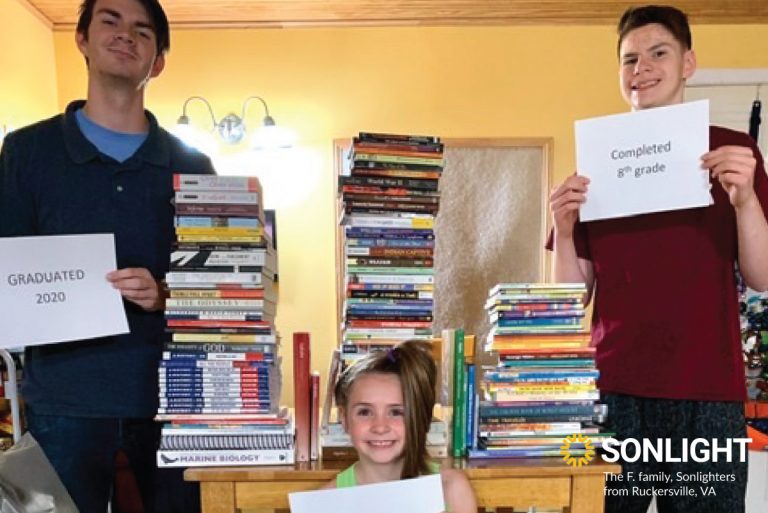
"Books show us the world, and in that sense, too many books for adolescents act like funhouse mirrors, reflecting hideously distorted portrayals of life."
Meghan Cox Gurdon, children's book reviewer for The Wall Street Journal
I agree with that quote. The young adult (YA) sections of libraries seem full of lurid exploits, harsh details of abuse, and abundant profanity. Gurdon challenges the darkness so popular in YA books.
You can read her insightful article here. (Warning – this article contains brief examples of typical dark plots. If you're a child or teen reading this, please check with a parent before clicking.)
Gurdon says that even though some teens do live in horrible situations, young adult books shouldn't therefore gluttonously wallow in darkness in an effort to identify with those hurting teens. Instead, we should realize that books help tell teens what the norms are in life. So we have a choice of what norms to portray.
Sonlight books create the norm for students that young people do face trials, get hurt and make mistakes, but that they can ultimately overcome in the end. Sonlight does not pretend the world is perfect. But through our book selections, we do show that young people can step up to the challenge, grow through hard times, and live with courage. They can make a difference in their families, communities, and world. Inspire your kids to change the world, strive for personal growth, and persist through trials with this eclectic mix of biographies (and one autobiography) from world history, US history, church history, and more. Use Christian biographies for young readers to inspire perseverance and character!
This is one reason I use my 7-point test to determine if a book is Sonlight-worthy. and include Christian biographies for young readers in each Sonlight program. One point of the test is that the protagonist must change for the better over the course of the book. So many Sonlight books in the upper levels don't just fulfill these standards; they go way beyond them. I think of works such as
- Peace Child
- To Kill a Mockingbird
- Till We Have Faces
- The Hiding Place
- Red Scarf Girl
- The Great Gilly Hopkins
- A Separate Peace
- The Chosen
- Jacob Have I Loved,
- A Severe Mercy
It seems that so much of what's on the non-Sonlight shelves for young people today just perpetuates the feelings of insecurity and anxiety that teens already face. Far better to give our students quality literature where young people acknowledge these feelings and find support to grow beyond that insecurity toward real courage.
Even when teens have been abused, I don't think the answer is to give them books that validate their experience as normal. We should instead offer adult aid that helps them see the abuse as a distorted, horrible thing that happened to them. We should help them heal instead of giving them novels that make them perpetually re-live their pain.
So I'm with Gurdon on this one, too:
I [take] the less progressive, less secular view that parents should take a more interventionist approach, steering their children away from books about sex and horror and degradation, and towards books that make aesthetic and moral claims.
Meghan Cox Gurdon
As parents and educators, we have the responsibility to help shape our children. We should not glorify teenage angst and misery. Instead we should stand as mature guides, helping teens acknowledge their hurt, see the bigger scope of life, and find constructive ways forward.
Real literature, with believable characters and situations, can help us do that for our children. Though children will see right through boring moralistic tales, let's inspire our teens with great biographies and compelling fiction that shows the world as it really is – a troubled place with lots and lots of hope.
I count it a privilege for Sonlight to come alongside you as you do that.
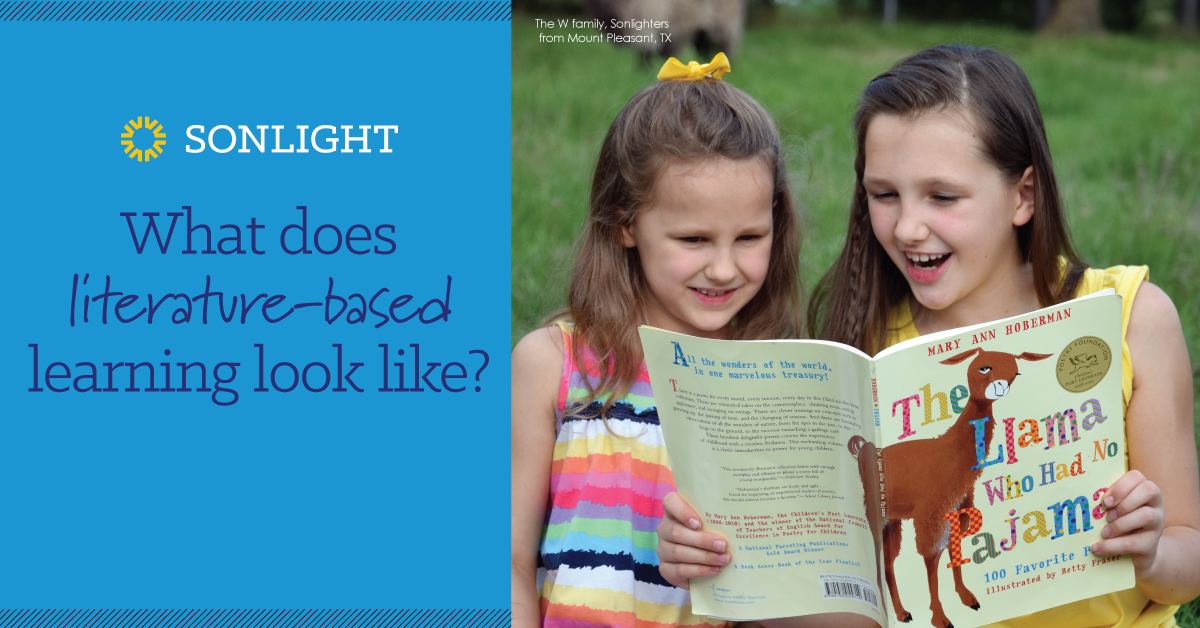



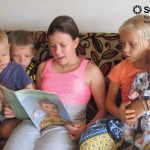
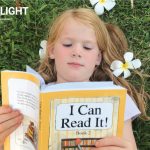


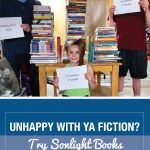
[…] article's thrust that we shouldn't dwell on depression and giving up. That's largely her point in her post about the literature Sonlight offers both in the high school levels and […]
Thanks for your comments! I count it a great blessing to be able to help parents give their children great books.
~Sarita
[…] post about young adult fiction grabbed me by the collar and threw me against the wall. As my head smacked the metaphorical bricks, […]
A couple of years ago I worked a book fair and earned $40 in books. I took my then 5th grade book loving daughter to pick out new books. When we went down the isle marked for her age group I was struck by the overwhelming number of violent, paranormal, and dating type books. My daughter has wonderful taste and picked out cook books with the credit but I was so sad for the "regular" kid. I thought "What are we feeding our young people?" It made me all the more thankful for our Sonlight books.
Thank you for this thought provoking post. I found Meghan Cox Gurdon's article very interesting. I often find myself perusing the YA section in my library for something light and fun to read, but haven't picked up any of the dark tales she referenced. It's odd to me that it's been there but I hadn't seen it (I've been drawn to books like those of Tamora Pierce's Song of the Lioness series). My children aren't at the YA reading level yet, but this is an important warning to take care of our children with books just as we might with movies and other aspects of their lives.
Thank you for this post! We are still in the elementary years, but I have already grown to trust your judgement in books. I look forward to the adolescent years, when we can discuss topics in our literature, in a safe environment. I also look forward to reading some great works that I didn't invest the time in when I was a teen.